Top: Prime Minister Prayut Chan-o-cha speaks to reporters on Dec, 24, 2020.
BANGKOK — First, it was the migrant workers to blame for the virus resurgence that saw at least 1,000 infected. Then, the crosshairs were trained on their employers, the migrant smuggling rings, local officials branded as incompetent, and even pro-democracy protesters.
But never the central government.
As different government agencies scrambled to explain and contain the outbreak in Samut Sakhon province, which has since spread to at least 20 provinces, none of them has yet to step forward and take responsibility for the mishap that led to the infections in the first place.
“If you want to lay blame on the government, then you have to see whether the public cooperates with us,” PM Prayut Chan-o-cha said during Thursday’s press conference. “I don’t blame Thais or anyone. The government has to take care of 70 million people, so it’s impossible to please everyone.”
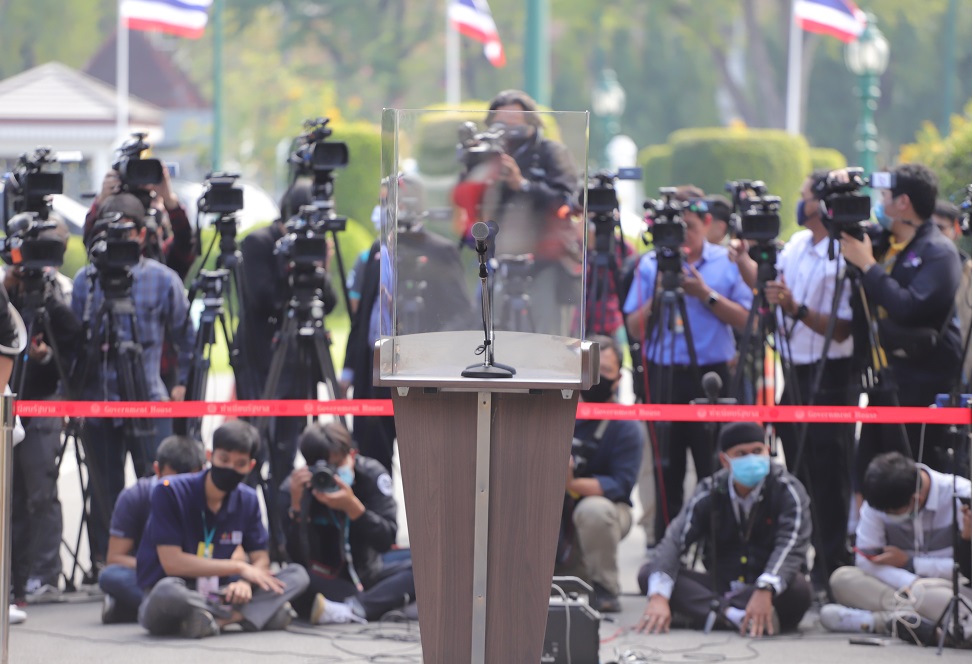
In less than 24 hours after the first infection was reported in Samut Sakhon last week, health minister Anutin Charnvirakul pointed his finger at the community of foreign workers, most of them from Myanmar.
He said the workers could be responsible for carrying the virus from overseas, which led to the infection of a Thai 67-year-old seafood vendor at a shrimp market in the province.
His claim was later supported by other government officials. Vichan Pawan, director of the health ministry’s Institute for Urban Disease Control and Prevention, said almost all of the patients discovered in Samut Sakhon are migrant workers from Myanmar.
“It’s relatively clear that the source of infection is the shrimp market,” Vichan said during Monday’s press briefings. “Many experts weighed in that it may have originated from migrant workers since 90 percent of the cases are migrant workers from Myanmar.”
He added, “It’s possible that they moved into our country when there was an outbreak in their country.”
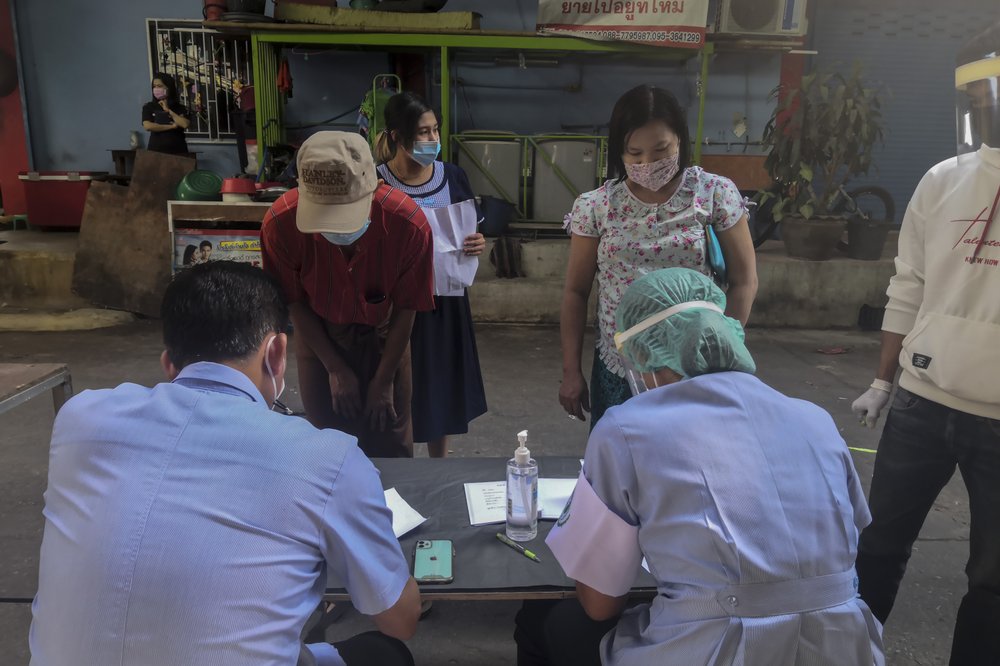
The shrimp market has since been shuttered by the governor until Jan. 3. Apartment buildings next to the market, where many migrant workers reside, were also placed under lockdown where no one was allowed to leave or enter the area – even the workers who tested positive for the virus were forced to live alongside those who haven’t caught the virus.
Samut Sakhon Gov. Veerasak Vijitsaengsri also found himself under Prayut’s wrath during a teleconference held on Tuesday, according to officials who attended the meeting.
“We already know the reason for the outbreak. It’s from the migrant workers,” Prayut reportedly told Veerasak in the video call. “But how have the workers arrived [in Thailand]? Where did the outbreak happen? I’m not criticizing you, but I’m telling you to find out who’s responsible, no matter who they are.”
PM Prayut went on, “All of us will have to take responsibility for this outbreak. I admit there were some mistakes for not taking care of the big picture as much as we should. But the Governor is also at fault for letting the migrant workers sneak into Thailand and cause the outbreak.”
Helping Hands
Most of the border checkpoints along Thailand’s 2,401-kilometers border with Myanmar have been shut down since the onset of the pandemic in March. However, labor rights watchdogs said workers are still being systematically smuggled into the country through unauthorized channels.
“Migrant smuggling networks continue to operate in the pandemic,” Suthasinee Kaewleklai, a coordinator for Samut Sakhon-based Migrant Workers Rights Network, said in an interview. “They’re outmanoeuvring the authorities.”
Myanmar recorded 923 new cases on Wednesday, though the country saw 1,067 new infections reported on daily average, according to data compiled by Reuters. Suthasinee suggested that the situation in Myanmar may have led people to sign up to work illegally in Thailand.
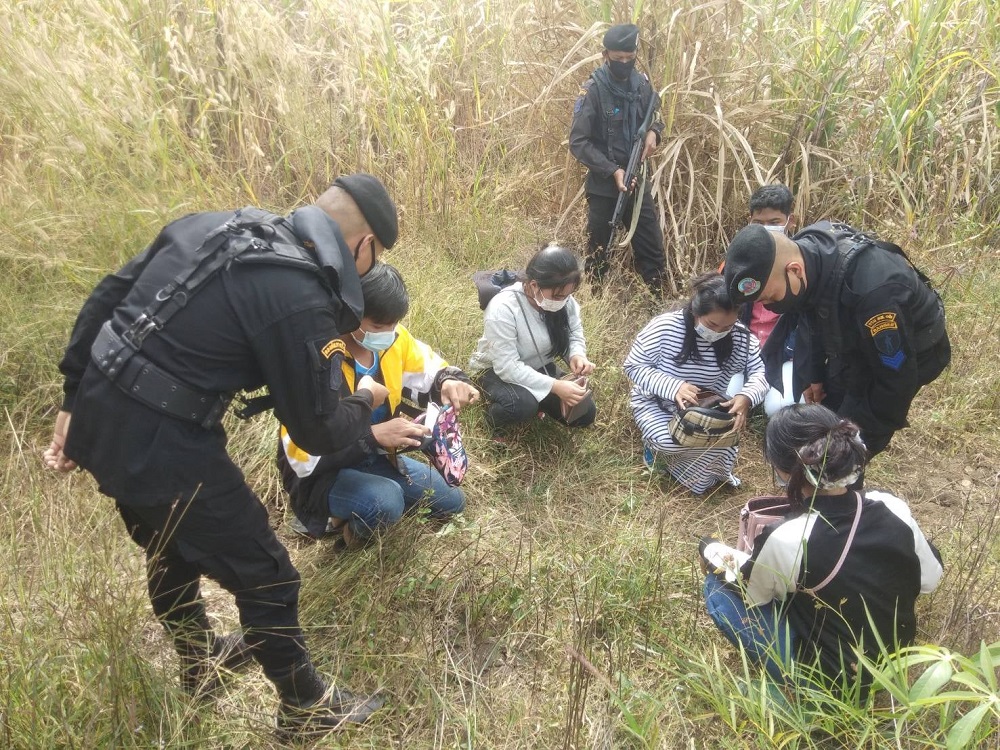
“Most of them came from remote areas in Myanmar,” the activist said. “They don’t know how to read or write. They have no access to information about how to work in Thailand legally. Therefore, they fell victims to migrant smuggling networks who lure them into paying a large sum of money in exchange for employment in Thailand.”
Defense spokesman Kongcheep Tantravanich said security officials are investigating how migrant workers managed to illegally cross the border despite increased patrols.
He also said that it is impossible for security forces to completely seal off the border, especially in the dry season of December, when many streams and rivulets can be forded without much difficulty.
“Soldiers can keep on patrolling, but we will never be able to man every point along the border simultaneously,” Lt. Gen. Kongcheep said in an interview. “We have been conducting patrols and installing razor wires and surveillance cameras ever since the pandemic began. We’re not being passive.”
PM Prayut himself blamed anti-government protests in Bangkok last month for the lax border control, saying that security officers were mobilized from the upcountry to maintain order in the capital.
“We had to bring in reinforcements to take care of the protest areas in Bangkok, so the officers in the upcountry have to work hard right now,” Prayut said on Npv. 30. “And the officers sent into Bangkok have to endure their works as well.”
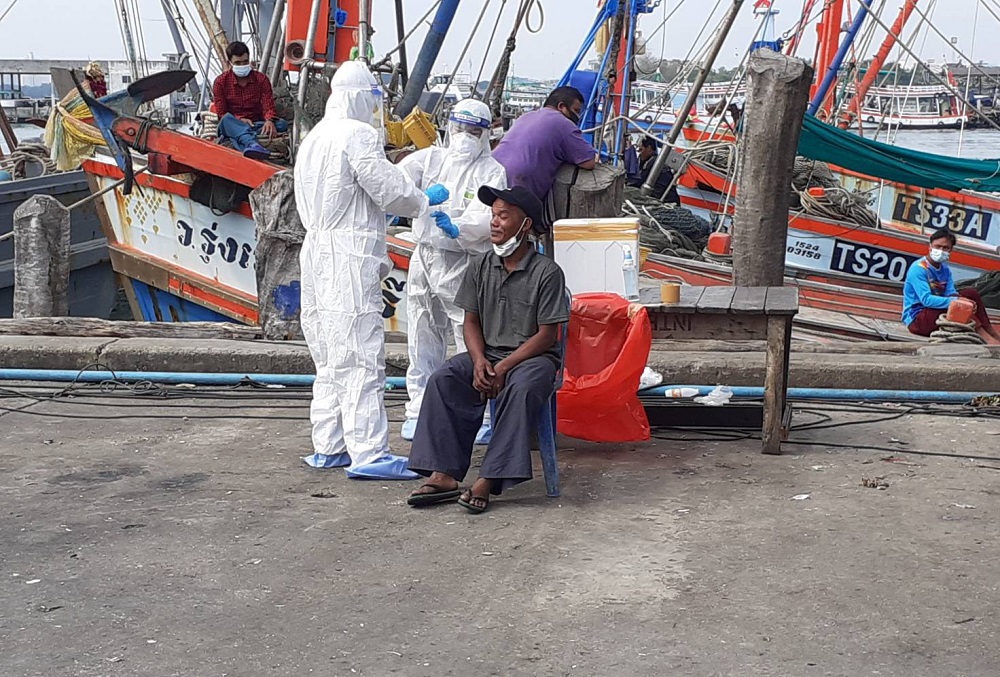
But Kongcheep said there is enough manpower to secure the border. He also suggested that the focus should be shifted to the organized crime enterprises instead of soldiers in the frontline.
“There’s no way for them to make it to Samut Sakhon without the help of the smugglers,” the defense spokesman said. “We must look into how they managed to pass through checkpoints deeper into the country, and how they managed to get employment permits, and hired for work.”
Transparency gadfly Srisuwan Janya said he suspected the smugglers must have colluded with law enforcement officials for their operation to be successful. He also went to the labor ministry on Wednesday to petition minister Suchat Chomklin to take legal action against employers who hired undocumented foreign workers.
“We can trace back to which channel they went through with the workers,” Srisuwan said. “Those responsible for that particular area at a particular point of time must be accountable for their negligence.”
But Lt. Gen. Kongcheep said the military has yet to find anyone in their ranks who conspired with the smugglers.
“We found no security officers involved with the smuggling ring at the moment, but if there is, we will certainly take action against them,” Kongcheep said.
Scapegoats?
The opposition has seized on the latest outbreak to criticize PM Prayut’s administration for failing to control the virus outbreak. Thailand reported only a few domestic cases for months prior to the spike in coronavirus cases discovered in Samut Sakhon
“The cause of the renewed outbreak is the national security authorities who let migrant workers being smuggled into the country,” deputy head of Pheu Thai Party Pichai Naripthaphan said Thursday.
“The person who is responsible for them is Gen. Prayut himself, who is also the defense minister. I ask him to take responsibility for his failure.”
However, Suthasinee the labor rights activist pushed back against the notion that foreign workers are guaranteed to be the culprits, since many of them have been working in Thailand long before the pandemic struck.
“We found no undocumented workers so far among the patients,” Suthasinee said. “Most of them worked here for years already.”
Her observation was backed up by immigration spokesman Archayon Kraithong, who said the preliminary case investigation concluded that every patient in Samut Sakhon holds the required paperwork so far.
“We’re conducting investigation, but the first batch of the patients are all documented workers,” Maj. Gen. Archayon said on the phone.
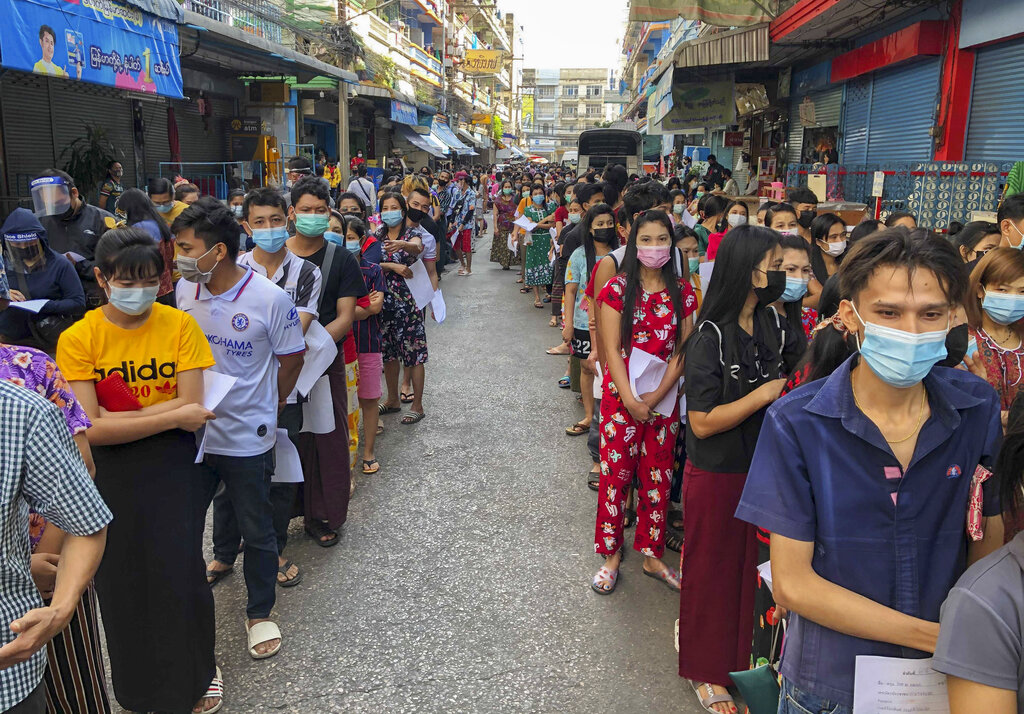
It is unclear whether his assertion is a roundabout way to protect the immigration bureau of any blames for failing to control the influx of undocumented workers – Archayon went on to insist that “no migrant workers can cross the border legally right now since all the checkpoints are closed.”
At any rate, Suthasinee said the attention being paid to the unregistered migrants by the media and the government is disproportionate. Her organization counts about 400,000 migrant workers residing in Samut Sakhon province, home to the country’s largest hub for the seafood industry.
Quoting a figure released by the local authorities, Suthasinee said 260,000 of the workers are documented, while 140,000 of them are not.
“Most factories here don’t employ undocumented workers since they may face santions from foreign trading partners,” she said. “I don’t believe the migrant workers should be blamed.”
